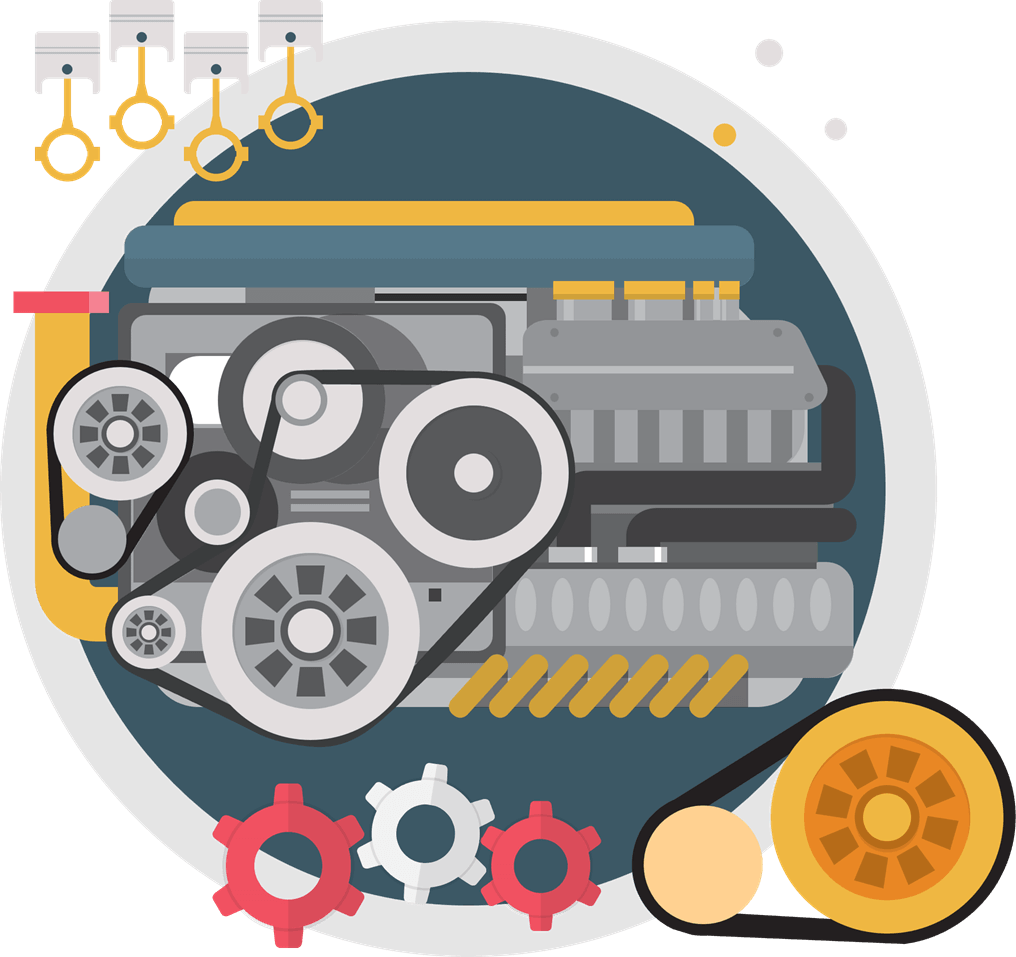
Conquer Workplace Distraction
Escape the constant pings and context switching. Learn how the Focus Room method creates a protected, high-momentum environment to tackle complex tasks and deliver results faster.

Harness Collective Focus Power
Discover how structured 'Focus Blocks' and the subtle power of 'Social Facilitation' (working alongside others, even virtually) combine to boost team motivation, rhythm, and shared accomplishment.

Build Your High-Output Engine
Get a practical, step-by-step blueprint using Agile principles. Implement your own Focus Room (physical or virtual), measure its impact, and cultivate a lasting culture of deep work and continuous improvement.
Story Background: The Desperate Survival of the "Phoenix Project"
Cold raindrops furiously beat against the floor-to-ceiling windows of the "Phoenix Project" war room. For the Nth time, I glanced at the massive countdown display on the wall. Only a suffocating 15 days remained until the final demo of our V3.0 autonomous driving system to the board and a group of hawk-eyed investors. And we had just experienced a disaster—no, an "epic fail": the core perception module's misjudgment rate in simulated rain and fog conditions had soared to a computer-smashing 20%. Worse, during a crucial pedestrian avoidance test, our supposedly "intelligent" test vehicle, like a drunkard who just got their license, had plowed straight into the dummy!
The air was thick with the desperate clatter of mechanical keyboards, sighs suppressed to the point of changing pitch, and an almost frozen silence between Alex Chen, head of the algorithm team, and Sarah Miller, director of hardware engineering. They had escalated from arguments to a cold war. The whiteboard in front of them, once covered in sophisticated algorithms and elegant circuit diagrams, was now smeared with red revision marks and angry crosses, resembling an abstract sketch of an accident scene investigation.
The "Phoenix Project" had been burning through investor money for over a year. Initially, we were ambitious. Davi, our project director, always pumped up and wearing the halo of a "Silicon Valley serial successful entrepreneur," had thumped his chest, proclaiming this the next world-changing project. We followed a traditional, decentralized R&D model: Alex led his algorithm "Geek Legion" in their ivory tower at the sunny California headquarters; Sarah, with her hardware "Amazon Brigade," wrestled with all sorts of bizarre sensors in their Austin lab; and the integration and testing team, far away at the Arizona desert proving grounds, complained daily about the "unreliability" of the first two teams. Each managed their own turf, and only when all the parts were supposed to come together did they realize they weren't even speaking the same "language."
Problems exploded like a disturbed hornet's nest: sensor data latency under specific conditions was long enough for someone to make a cup of coffee and come back; the model responded as slowly as an old ox pulling a rickety cart; in bad weather, the multi-million dollar LiDAR became an expensive ornament. Alex's team, having optimized their "perfect" model based on an "ideal vacuum environment," had completely overlooked the kind of trouble Sarah's hardware would stir up in the high-temperature, high-humidity conditions of the real world, causing the vehicle to occasionally engage in "ghost braking," scaring the testers out of their wits. Worst of all, inter-team communication efficiency was appallingly low; information transmission was like smoke signals from a primitive tribe, and tracing a bug was harder than solving Goldbach's conjecture. During one important rainy-day road test, because the algorithm hadn't been timely adapted to the blind spots of a new sensor's field of view, the vehicle identified the swaying inflatable tube man at a convenience store entrance as a pedestrian crossing the road, violently swerved, and almost plunged headfirst into the fast-food restaurant next door!
"We're fucking screwed, people! If V3.0 continues like this, forget launching, next week's demo will be our public execution!" At an emergency review meeting, Davi, a stark contrast to his usual "everything's under control" demeanor, had veins bulging on his forehead. He slammed the road test report – still smelling of ink and enough to make any engineer want to dig a hole and hide – onto the conference table so hard that the energy drink can beside it jumped. "The client wants a stunning demo next week that will make them open their wallets. Right now, we can't even guarantee we won't crash into a wall in the rain!" A dead silence fell over the room, broken only by the roar of the central air conditioning and the sound of the downpour outside, which seemed to play a dirge for our failure.
Just then, an idea flashed through my mind – I, Vivi Lee, a PM responsible for cross-departmental coordination, nicknamed the "firefighter." It was a crazy idea, the kind you only think of on the brink of life and death. I remembered an almost urban-legendary "War Room" model I'd heard about at an industry summit.
"Davi, everyone," I cleared my throat, trying to keep my voice from trembling, "I have a proposal, perhaps a bit - extreme. We launch a 'Focus Room.' Gather all the core members from algorithms, hardware, and testing – no, everyone who can still breathe, still code, still turn a screw – right here in this war room, 24/7. Eat, sleep, live here, until V3.0 runs like a normal autonomous driving system!"
Hardware Director Sarah Miller was the first to react. A decisive Texan woman whose speech usually resembled machine-gun fire, she now stood with her arms crossed, sizing me up with her trademark penetrating gaze, a hint of sarcasm on her lips: "Vivi, darling, have you been binge-watching superhero movies all night? You think cramming us frazzled engineers into a room like sardines in a can will miraculously solve chip-level heat dissipation and EMI (electromagnetic interference) issues, problems governed by physical laws? My precious precision instruments and constant temperature and humidity lab environment – are you going to replicate those with 'the power of love'?"
Algorithm team lead Alex Chen also pushed up his thick, black-framed glasses, his eyes behind the lenses filled with exhaustion and doubt. Alex, a typical tech geek who was usually a man of few words, couldn't help but speak up: "Vivi, I understand your urgency, but our model training and large-scale parallel computing require vast cloud computing clusters, not a bunch of people in a room passing anxiety to each other. Besides, in this kind of pressure cooker mode, I'm worried my team will collectively break down before we solve the problems." He gestured towards a few young algorithm engineers in the corner, already looking dazed.
But in that instant, a strange light glinted in Davi's eyes, like a drowning man clutching at the last straw. He slammed his hand on the table, making the empty coffee cups clatter. "Sarah, your precision instruments – move what can be moved! What can't, we'll turn this place into a temporary lab! EMI problems? We can wrap the whole room in tin foil if we have to! Alex, your computing clusters? We can work in 24-hour shifts debugging remotely! Team breakdown? If we lose V3.0, everyone can just wait to collect unemployment benefits together! It's settled! Starting 8 AM tomorrow, this is our 'Phoenix' Focus Room! No retreat. Either we rise from the ashes, or we're completely finished!" His voice carried a do-or-die determination.
Focus Room Launched: Forging Phoenix Feathers in the Storm
The next day, the 200-square-meter open-plan office area was rapidly, almost brutally, transformed. The low hum of servers became the new background music, UPS units buzzed, emitting a faint smell of ozone. Walls were covered with enormous whiteboards, plastered with dense system architecture diagrams, Bugzilla issue lists (prioritized with different colored sticky notes, red meaning "on fire"), burndown charts (the curve plummeted, making hearts pound), various hastily sketched solutions, and even a few printouts of competitors' product teardowns. Nearly 30 elite members from algorithms, hardware, systems, and testing "moved in" with their laptops, musty sleeping bags, and "I'm gonna give it my all" expressions. The air was a complex mix of concentrated coffee, cheap energy drinks, takeout pizza, and the smell of unwashed clothes.
We established a few simple, brutal, but strictly enforced "battlefield disciplines":
1. Thrice-Daily "War Briefings" (Daily Stand-ups): Morning, noon, and night, each strictly limited to 15 minutes, hosted by me, Vivi, the "firefighter." Everyone took turns, using no more than 60 seconds, to clearly state three things: what "damn thing" they conquered yesterday, which "roadblock" they planned to eliminate today, and "Whose fire support do I need, right now, immediately!"
2. "Blockers Must Die" (No Blocker Survives The Night): All issues marked as Blockers had to have a solution or at least a clear, assigned action plan within 24 hours. Davi would
3. personally monitor the progress of every Blocker.
4. "Radical Transparency" (Radical Transparency & No Bullshit Policy): All discussions, data, code snippets, even failed attempts, were openly shared with all members. Cross-domain "fault-finding" was encouraged; any form
5. of "passing the buck" or "office politics" was forbidden. Sarah highly approved of this; she hated dawdling.
6. "Laser Focus Mode" (Laser Focus, Zero Distraction): All external meetings, irrelevant emails, and any potentially distracting social media were blocked (Davi even threatened to temporarily confiscate phones, but backed down after collective protest).
7. The sole objective: Make the "Phoenix" fly.
The first few days were practically a preview of "World War III." When Alex's algorithm team complained that the data interface provided by hardware had too high a latency to meet real-time requirements, Sarah snatched a latest prototype circuit board from her temporary workbench and slammed it down ("Thwack!") on Alex's messy pile of draft papers: "Dr. Chen, this is all the performance our engineers squeezed out after three sleepless days and nights! Every nanosecond was earned with sweat and caffeine! Unless your 'genius algorithm' can consume fewer resources, or you redesign that damn data compression protocol yourselves, don't bother me!"
Alex, calmly (or rather, expressionlessly), pushed up his glasses, picked up the circuit board, examined it carefully, and then said placidly, "Director Miller, I understand physical limits. But if the data arrival time cannot be guaranteed within 10 milliseconds, my prediction model will turn into an expensive random number generator. My team will try to optimize the data preprocessing flow at the software level, but if you can squeeze out another 2 milliseconds at the firmware level, the success rate can improve by at least 5 percent." This kind of direct, data-driven dialogue replaced the previous back-and-forth buck-passing and guesswork in emails.
The most memorable moment was the third sleepless night. The downpour outside showed no signs of stopping, as if mocking our struggles. Young Mike from the testing team, a quiet but diligent lad, once again found that noise data from the LiDAR in simulated heavy rain flooded the system like an avalanche, completely paralyzing the path planning module. The test car traced an unbelievable "death spiral" trajectory on the screen.
I (Vivi), pointing at the tangled mess of the point cloud on the projector, my voice a bit hoarse, said, "It's the scattering interference of raindrops on the laser beam. Alex, your previous traditional filtering algorithm based on Gaussian Mixture Models seems to have completely failed now."
"On the hardware side, we can try dynamically adjusting the sensor's laser emission power and scanning mode combinations. I've already written a script to quickly switch between several preset schemes," Sarah responded immediately, her bloodshot eyes glinting with an engineer's characteristic stubbornness. "But it requires the algorithm team to synchronously modify all related adaptation parameters and perception fusion strategies, otherwise, it's just pointless fumbling."
"Send me the range and combination schemes of all adjustable sensor parameters," Alex's expression remained calm, but his typing speed was like a frenetic piano sonata. "Mike, give me that worst-case raw data stream from just now. My team will abandon traditional filtering. We'll train a new deep learning-based adaptive denoising model overnight, directly extracting features from the raw point cloud, and then perform multi-modal fusion verification with visual data. We're going to make the machine learn to distinguish between raindrops and real obstacles itself!" His tone brooked no argument, filled with an obsessive confidence.
That night, the war room was lit up as bright as day. Sarah and her hardware engineers, in a makeshift shielded darkroom built with anti-static cloth and metal racks, constantly adjusted sensor parameters, sweat soaking their T-shirts. Alex, leading his algorithm team, pounded keyboards furiously in front of desks piled high with empty pizza boxes and Red Bull cans. Code streamed down the screens like waterfalls, occasionally interspersed with low curses and excited whispers. I shuttled between different groups, ensuring smooth information flow, and resolving various ad-hoc logistical issues, like urgently ordering more coffee beans or coordinating with downstairs security to allow us to move debugging equipment in the middle of the night.
At four in the morning, when the first grey rays of dawn struggled through the gaps in the curtains to illuminate this "battlefield" filled with the smell of sweat and burnt electronic components, Alex's trademark calm expression finally loosened. He abruptly stood up from his chair, swaying slightly from sitting too long, but he paid it no mind. His voice was hoarse but carried an undisguised excitement as he yelled to the entire war room, "Got it! The new model, on the worst data segment Mike just provided, has a noise suppression effect improved by 70%, and target recognition accuracy is back above 95%!"
The entire war room first fell into a deathly silence, then erupted in deafening cheers and loud high-fives. A few young algorithm engineers even hugged each other in excitement. Sarah, too, managed a tired but relieved smile. She walked over and clapped Alex heavily on the shoulder, "Not bad, bookworm." Alex just pushed up his glasses, a slight smile playing on his lips, "Likewise, tough girl."
Immediately after, they practically sprinted to the test car, swiftly deploying the new algorithms and hardware configurations. When the battle-hardened "Phoenix" test car, in the simulated torrential rain, smoothly and accurately avoided all virtual obstacles for the first time, tracing a fluid trajectory on the screen, Davi jumped up like a child, pumping his fists and shouting, "Yes! Yes! We are back in the game!"
Phoenix Nirvana Under the Spotlight
Once ignited, the magic of the Focus Room was unstoppable:
- A chip heat dissipation bottleneck that had long plagued the hardware team was significantly alleviated within two hours after a young guy from the algorithm team, who had a good understanding of low-level hardware, proposed an "unconventional trick" of "dynamically adjusting the computational core load to avoid peak power consumption." For this, Sarah specially approved a case of his favorite imported beer (to be redeemed after the project's success, of course).
- When the testing team reported unstable recognition rates on a specific curve, Alex and Sarah, with their core team members, sat side-by-side in the test car, analyzing data streams and adjusting parameters in real-time. Three hours later, the problem was solved. Although the two were still quietly "amicably" arguing about whether the algorithm or the hardware tweaks were more crucial, the smiles on their faces were genuine.
On the final day of the countdown, we once again drove the "Phoenix" test car onto the full-function test track. The storm arrived as if on cue, a final judgment. But this time, the V3.0 system, like a seasoned veteran, handled it calmly, accurately identifying every traffic participant and tiny road obstacle, completing all high-difficulty test subjects with silky smoothness, and even "showed off" by expertly navigating a difficult narrow road encounter. The final misjudgment rate, miraculously dropped from the disastrous 20% to an incredible 0.3%.
On delivery day, as Davi stood under the spotlight, presenting V3.0's perfect performance in various extreme weather and complex road conditions to the breathless board members and investors, thunderous applause erupted from below, interspersed with loud "Hoorays!" and whistles. I (Vivi) looked at my comrades in the war room – each sporting panda eyes, stubbled chins, and messy hair, but with eyes as bright as stars – and at the whiteboard that had transformed from an "accident scene" to a "wall of honor," my heart filled with a whirlwind of emotions.
Davi was exultant on stage, while Sarah leaned against the war room doorframe, arms crossed, a hint of her characteristic slightly smug smile on her lips. She murmured to Alex beside her, "Hey, bookworm, you didn't hold us back this time." Alex adjusted his glasses and, uncharacteristically, quipped back, "Likewise, tough girl. Next time, my algorithms will be even more elegant, leaving your hardware with nothing to fault." They exchanged a smile, a rapport only comrades who had fought side-by-side could understand.
It dawned on me: sometimes, the key to breaking through technical bottlenecks and creating business miracles lies not just in sparkling code or top-tier hardware, nor solely in processes and methodologies. It lies more in a collaborative approach that can forge a group of eccentric, even somewhat incompatible "oddball geniuses" into an ironclad team truly capable of fighting tough battles – a working method that completely immerses the team in an environment of "sharing the blame, sharing the space, instant feedback, and extreme focus." This is the power of the "Focus Room," or as we prefer to call it, the magic of the "War Room" – a crucible that forges team spirit in desperate times.
In this "Phoenix Project" Focus Room journey, everyone was like a mini-universe ignited, bursting with astonishing energy, and also allowed us to see hidden sides of each other. Together, we enabled this nearly broken-winged phoenix to rise from the ashes and soar into the sky. And this story is merely the opening prelude to our exploration of how to build a truly battle-winning team of "Brilliant Jerks" (High-Performance Teams of Brilliant Jerks, meant in a complimentary way, of course).